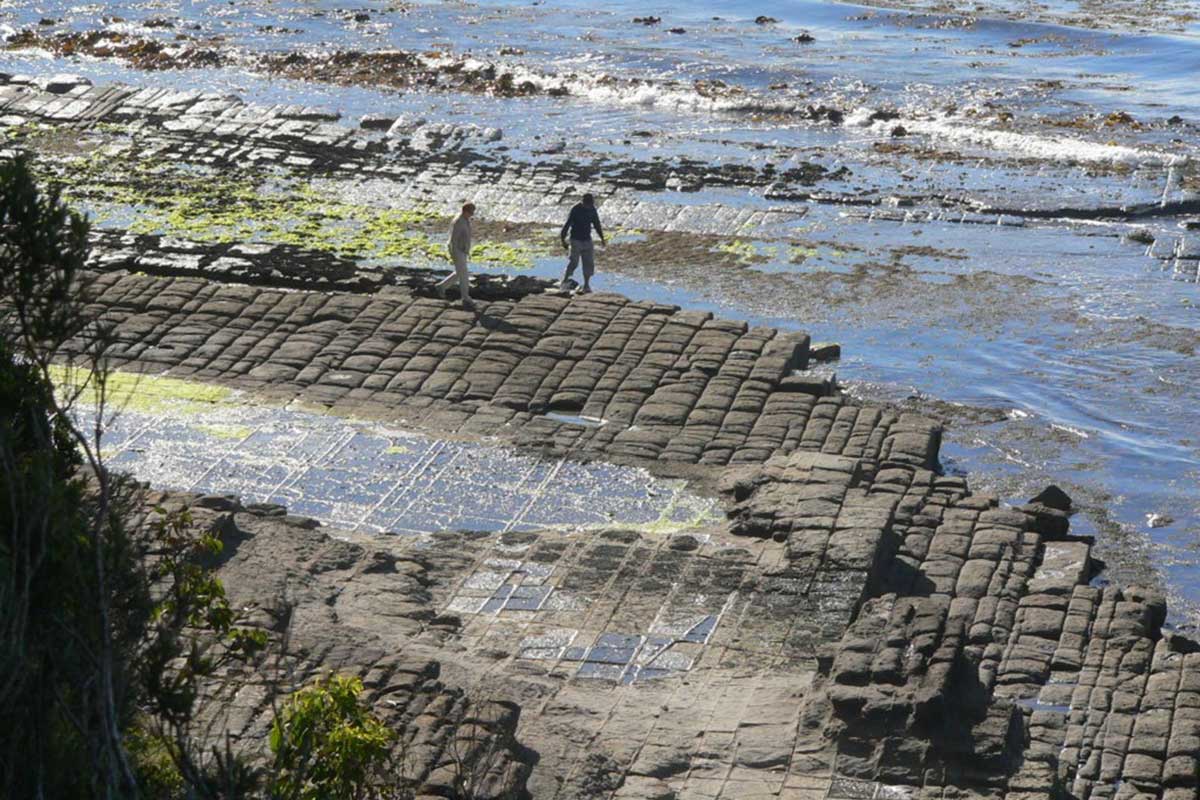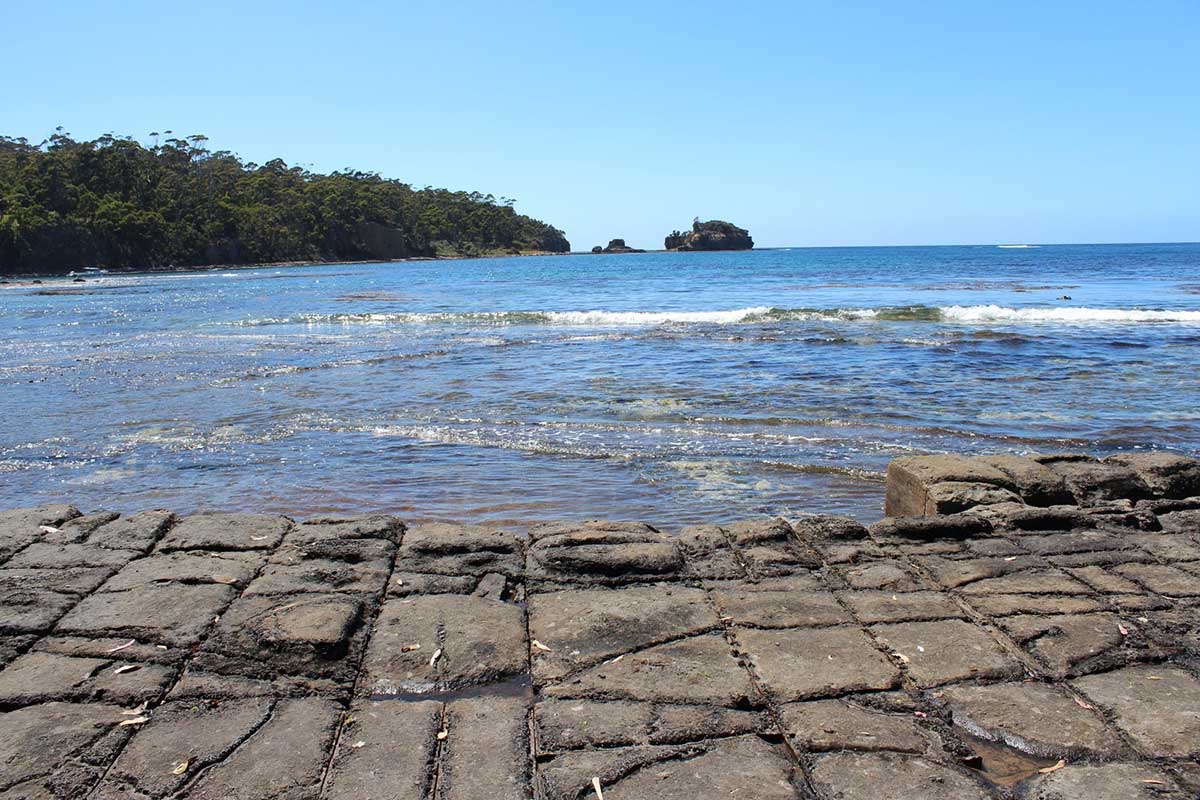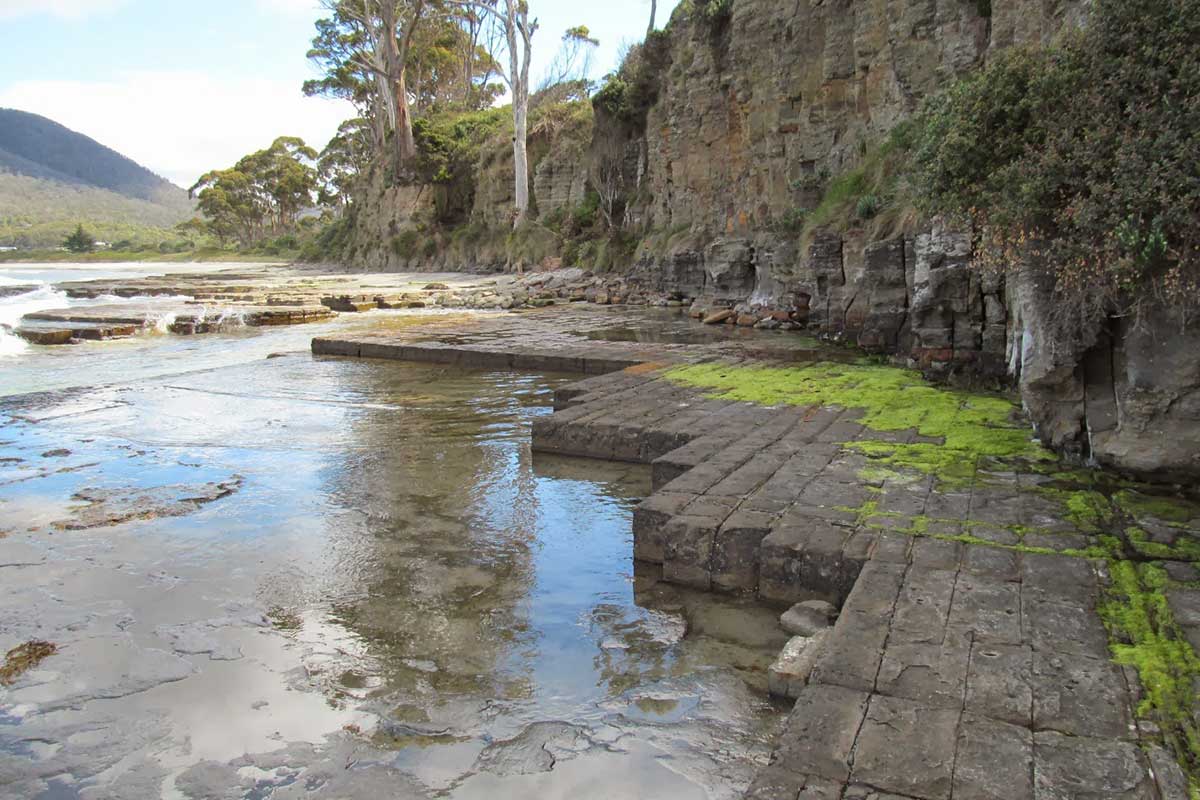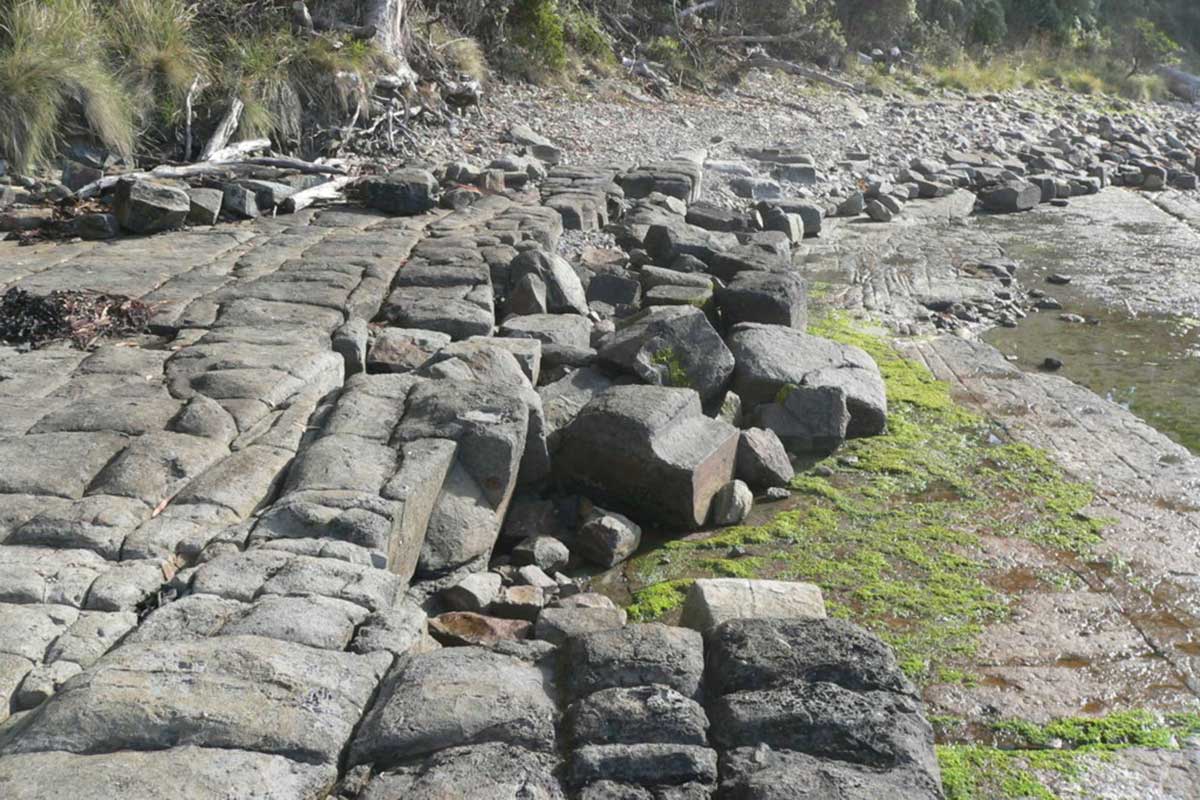Tessellated Pavement, Tasmania

By far the most well known feature of Forestier Peninsula is the Tessellated Pavement, situated a short distance from Eaglehawk Neck on the shoreline below the Lufra Hotal. This unusual geological formation gives the rocks the effect of having been rather neatly tiled by a giant. The pavement appears tessellated (tiled) because the rocks forming it were fractured by earth movements. The fractures are in three sets. One set runs almost north, another east north east, and the third discontinuous set north north west. It is the last two sets that produce the tiled appearance. This tessellated pavement is one of the largest in the world.

This tesselated pavement consists of a marine platform on the shore of Pirates Bay, Tasmania. This example consists of two types of formations: a pan formation and a loaf formation. The pan formation is a series of concave depressions in the rock that typically forms beyond the edge of the seashore. This part of the pavement dries out more at low tide than the portion abutting the seashore, allowing salt crystals to develop further; the surface of the "pans" therefore erodes more quickly than the joints, resulting in increasing concavity.
The loaf formations occur on the parts of the pavement closer to the seashore, which are immersed in water for longer periods of time. These parts of the pavement do not dry out so much, reducing the level of salt crystallisation. Water, carrying abrasive sand, is typically channelled through the joints, causing them to erode faster than the rest of the pavement, leaving loaf-like structures protruding.
Location: Pirates Bay Drive, Eaglehawk Neck

In geology and geomorphology, a tessellated pavement is a relatively flat rock surface that is subdivided into more or less regular rectangles, blocks approaching rectangles, or irregular or regular polygons by fractures, frequently systematic joints, within the rock. This type of rock pavement bears this name because it is fractured into polygonal blocks that resemble tiles of a mosaic floor, or tessellations. The most common type of tessellated pavement consists of relatively flat rock surfaces, typically the tops of beds of sandstones and other sedimentary rocks, that are subdivided into either more or less regular rectangles or blocks approaching rectangles by well-developed systematic orthogonal joint systems.
The surface of individual beds, as exposed by erosion, are typically divided into either squares, rectangles, and less commonly triangles or other shapes, depending on the number and orientation of the joint sets that comprise the joint system. This relatively flat surface of individual beds of sedimentary rocks are frequently altered by weathering along joints as to cause the bedrock along the joints to be either raised or recessed as the result of differential erosion. This type of tessellated pavement is commonly observed along shorelines where wave action has created relatively flat and extensive wave-cut platforms that expose jointed bedrock and keeps the surfaces of these platforms relatively clear of debris.

